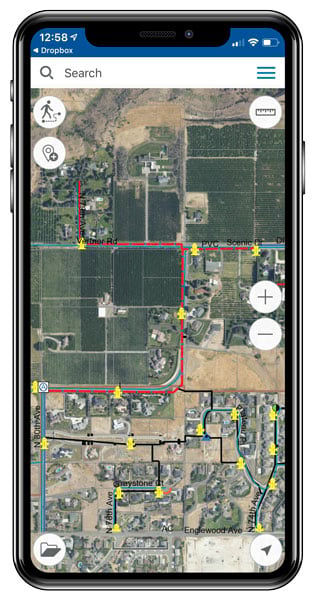Technology from Startup VODA.ai Reduces Water Loss Due to Pipe Failures
Safe, reliable water infrastructure is essential to any country’s public health and basic sanitation needs. Yet across the United States, water pipes that have been in use for 50, 100, or even 150 years are common, and the hazards of this aging infrastructure are many. Frustrated customers experience more service disruptions and higher water bills, while water utilities deal with higher repair costs and increased nonrevenue water (NRW) loss from broken pipes.
Utilities the world over are challenged by NRW loss. Separate studies by the World Bank and the American Water Works Association (AWWA) estimate global NRW loss to be 20–40 percent. And that loss occurs after utilities have already incurred the expenses of sourcing, treating, and distributing water. Additional consequences of deteriorating water infrastructure include damaged property and roads following a main burst and repair, as well as increased greenhouse gas emissions due to the electricity and fossil fuels consumed during the sourcing, treating, and distribution of water.
For water utilities, it isn’t enough to wait for the breaks to occur. Proactively replacing water main pipes is the best way to reduce NRW loss from pipe failures.

Longtime Esri user Nob Hill Water Association in Yakima, Washington, elected to prevent this loss by proactively replacing old water mains. But this wasn’t going to be easy. The utility would need a system for selecting the right pipes to replace at the right time, which would include factors such as pipe age, failure history, and manufacture material. Overall, the utility needed a way to make better-informed decisions about these pipe replacements while maintaining service to its customers, avoiding water loss, and staying within budget.
To address these challenges, Nob Hill Water combined its already existing ArcGIS technology with daVinci, a powerful machine learning engine from Esri startup partner VODA.ai. Using ArcGIS Desktop, Nob Hill Water gains insight into terrain, infrastructure, and risk via contextual tools that help visualize and analyze data. When joined with VODA.ai’s machine learning-powered virtual condition assessments, the resultant functionality allows the utility to accurately target those assets most in need of attention before costly damage occurs.
“Every utility has more miles of main line that should be replaced than there is money in the budget,” said Zella West, manager at Nob Hill Water. “We are using this program to direct our valve exercising program to the mains that are predicted to fail so that if they do fail, the damage can be kept to a minimum.”
VODA.ai’s machine learning features rank each water main segment by the likelihood of failure, as well as the consequences of that failure. This then guides its priorities and fieldwork planning. Factors that the system analyzes include pipe data, weather, soil type, seismic activity, and traffic and satellite data—all of which reveal the water mains most likely to fail next. On the flip side, daVinci also establishes the pipes that have remaining useful life, which helps the utility avoid replacing healthy pipes prematurely.
“VODA.ai’s artificial intelligence platform finds patterns of pipe strengths and weaknesses for all of our water mains. It even predicts which pipes are likely to fail within the next 12 months,” said West. “Asset management decisions based on the age of pipes or their failure history are generally less than half as accurate as VODA.ai’s machine learning assessments, so this helps us make smarter decisions on pipes to replace or leave alone.”
Once in the field to perform repairs or maintenance, utility engineers use CarryMap, an app from Esri partner Data East that’s compatible with ArcGIS Desktop, to view pipes, valves, and hydrants on a map. Using daVinci’s ranking of pipe segments by risk, engineers can look for visible leaks on vulnerable pipes and make repairs if needed. The map view on the app also makes it easier to find and test nearby valves and figure out which customers are served by which pipes.
Having mobile access to ArcGIS maps, along with the insights created by VODA.ai’s machine learning analysis of high-risk pipes, has made the utility’s engineers so much more efficient that the board at Nob Hill Water approved the largest capital budget to date for the repair and replacement of water mains. What’s more, leaders at Nob Hill Water now make smarter decisions on the basis of machine learning-enabled virtual condition assessment.

